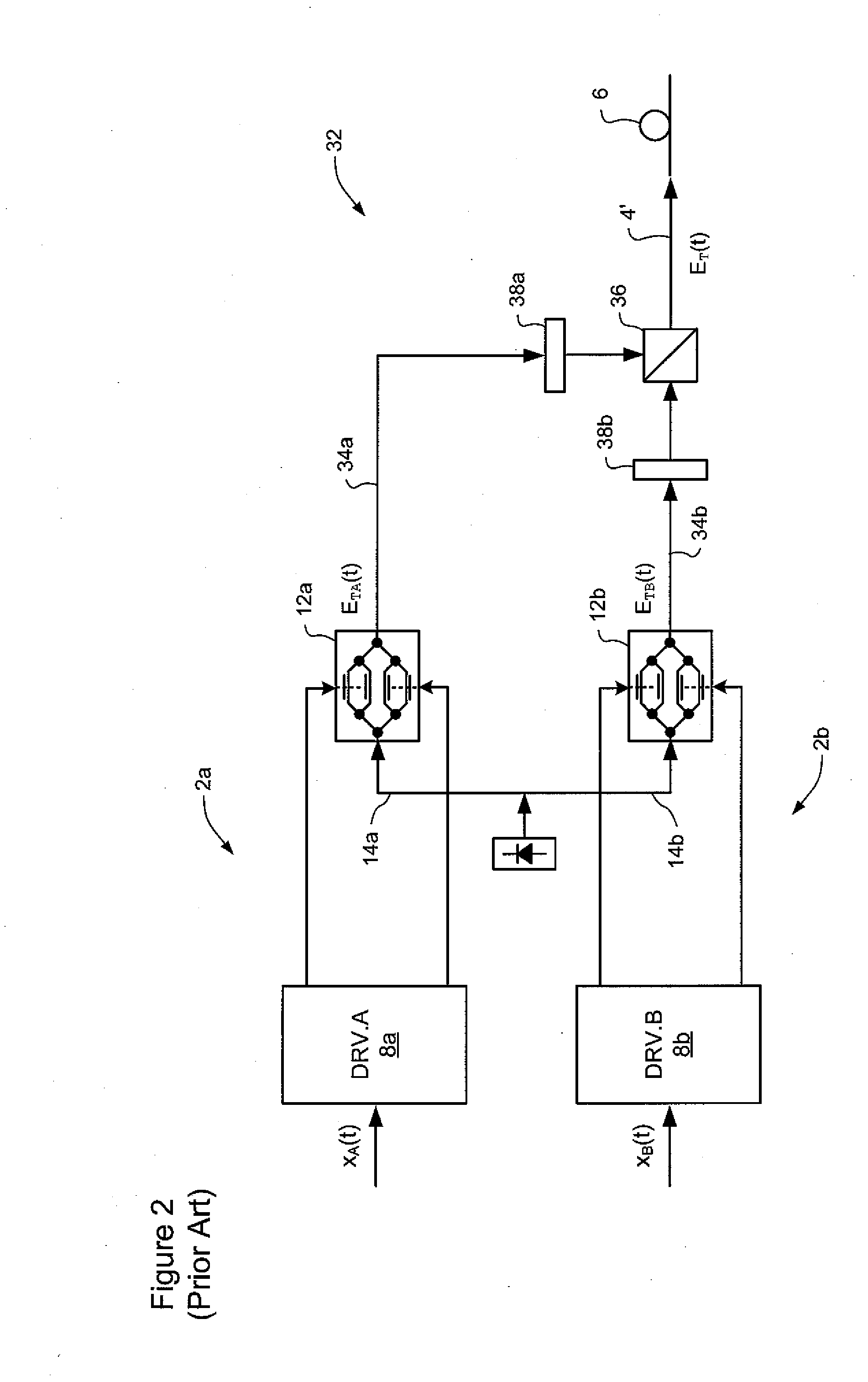Low conversion rate digital dispersion compensation
a digital dispersion compensation and low conversion rate technology, applied in the direction of digital transmission, multiplex communication, orthogonal multiplex, etc., can solve the problems of aliasing, insufficient to prevent severe signal distortion, and insufficient dispersion compensation applied to that energy
- Summary
- Abstract
- Description
- Claims
- Application Information
AI Technical Summary
Benefits of technology
Problems solved by technology
Method used
Image
Examples
Embodiment Construction
[0048]The present invention provides technique for transmitting digital signals through a high-speed optical network, in which sample rates significantly below T / 2 can be used. Embodiments of the present invention are described below, by way of example only, with reference to FIGS. 6-14.
[0049]In very general terms, the present invention provides methods and systems, in which aliasing is mitigated by oversampling the received optical signal, at a fractional multiple N of the symbol rate, wherein Ns of Ts>T / 2. Fractional sampling avoids the thermal barrier associated with the extreme sample rates implied by full T / 2 sampling, and yet shifts the 1st harmonic spectra away from the baseband signal. This shifting of the 1st harmonic spectra reduces overlap at the tails. High order analog low pass filtering of the optical signal (either in the optical or electrical domain) with a very steep roll-off and a cut-off frequency corresponding to ½T can be implemented in the receiver to suppress ...
PUM
 Login to View More
Login to View More Abstract
Description
Claims
Application Information
 Login to View More
Login to View More - R&D
- Intellectual Property
- Life Sciences
- Materials
- Tech Scout
- Unparalleled Data Quality
- Higher Quality Content
- 60% Fewer Hallucinations
Browse by: Latest US Patents, China's latest patents, Technical Efficacy Thesaurus, Application Domain, Technology Topic, Popular Technical Reports.
© 2025 PatSnap. All rights reserved.Legal|Privacy policy|Modern Slavery Act Transparency Statement|Sitemap|About US| Contact US: help@patsnap.com



